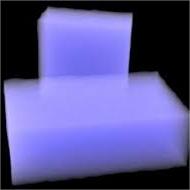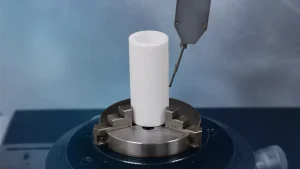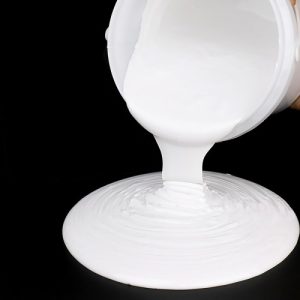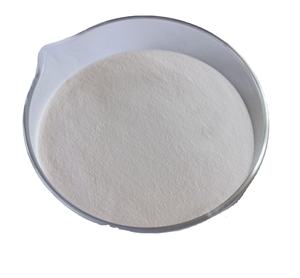Professional industry ceramic supplier, silicon nitride, silicon carbide, aluminum nitride and any other kinds of ceramics.
1. Introduction
Just 24 hours ago, a major breakthrough was announced by a U.S.-based advanced ceramics manufacturer: they’ve developed a new sintering technique that boosts the thermal shock resistance of silicon carbide crucibles by over 30%. This innovation is already reshaping foundry operations in aerospace and semiconductor sectors, where purity and durability under extreme heat are non-negotiable. As industries push toward higher efficiency and cleaner processing, understanding the nuances of materials like silicon carbide crucible becomes essential—not just for metallurgists, but for engineers across disciplines.

Silicon carbide (SiC) has long been prized for its hardness, thermal conductivity, and chemical inertness. But not all SiC-based products are created equal. From crucibles to ceramic dinner plates, the material’s versatility can be misleading. In this article, we’ll compare key variants and competing ceramics to help you choose the right solution for your application.
2. Silicon Carbide Crucible vs. Zirconia and Alumina Crucibles
When selecting a crucible for high-temperature melting—especially for reactive metals like titanium or rare earths—the choice often comes down to three advanced ceramics: silicon carbide, zirconia (ZrO₂), and alumina (Al₂O₃).
Silicon carbide crucibles excel in thermal conductivity and mechanical strength, making them ideal for repeated heating cycles in aluminum, copper, and brass foundries. However, they can react with highly basic slags or oxidizing atmospheres above 1,600°C.
In contrast, zirconia crucibles offer superior chemical inertness and can withstand temperatures beyond 2,000°C, but they’re brittle and expensive. Alumina crucibles strike a middle ground—good chemical resistance and affordability—but lack the thermal shock resilience of SiC.
- Silicon carbide crucible: Best for non-ferrous metal casting with frequent thermal cycling.
- Zirconia crucible: Preferred for ultra-high-purity melts and reactive alloys.
- Alumina crucible: Cost-effective for general lab and moderate-temperature industrial use.
3. Boron Carbide vs Silicon Carbide: Where Each Shines

Though both are ultra-hard ceramics, boron carbide (B₄C) and silicon carbide serve very different niches. Boron carbide is lighter and harder—used primarily in body armor and neutron absorbers—but it’s far more expensive and difficult to machine.
Silicon carbide, on the other hand, offers better thermal conductivity and oxidation resistance, making it the go-to for furnace components like silicon carbide burner nozzles, silicon carbide brick linings, and even silicon carbide ceramic tubes for thermocouple protection.
For crucible applications, silicon carbide dominates due to its balance of cost, manufacturability, and performance. Boron carbide is rarely used in crucibles because of its poor sinterability and vulnerability to hydrolysis in moist environments.
4. Silicon Carbide vs. Silicon Nitride in High-Temp Components
Silicon nitride (Si₃N₄) is another advanced ceramic often compared to SiC. While both handle extreme heat, silicon nitride boasts exceptional fracture toughness and thermal shock resistance—ideal for components like custom silicon nitride heat shields, silicon nitride rings, and even silicon nitride crucible factory outputs for specialized semiconductor processes.
However, silicon carbide outperforms in thermal conductivity and wear resistance. That’s why you’ll find silicon carbide ceramic columns and RBSiC silicon carbide tile blocks in kiln furniture, while silicon nitride plates are chosen for dynamic-load applications like turbine blades or pump seals.

Neither is universally ‘better’—the choice hinges on whether your priority is thermal management (SiC) or mechanical reliability under impact (Si₃N₄).
5. Beyond the Foundry: The Curious Case of ‘Silicon Carbide’ Dinnerware
A quick online search reveals dozens of listings for ‘silicon carbide ceramic dinner plates,’ ‘silicon carbide baking dish Staub,’ and even ‘silicon carbide ceramic Christmas plates.’ But here’s the truth: most of these consumer products don’t actually contain structural silicon carbide.
True silicon carbide is black, extremely hard, and not food-safe in raw form. What’s marketed as ‘silicon carbide ceramic dish’ is typically stoneware or porcelain glazed to mimic the speckled appearance of SiC composites. Genuine silicon carbide ceramic baking dishes are rare and would be prohibitively expensive for kitchen use.
Similarly, items like silicon carbide ceramic butter dish with lid or silicon carbide ceramic ramekins are aesthetic labels—not technical specifications. Always verify material composition if high-temperature or chemical resistance is required.
6. Conclusion
Silicon carbide crucible remains unmatched for many industrial melting applications thanks to its robust blend of thermal, mechanical, and economic advantages. Yet, it’s not a one-size-fits-all solution. When extreme chemical inertness is needed, zirconia wins. For impact resistance, consider silicon nitride. And when you see ‘silicon carbide’ on a dinner plate? It’s likely just marketing flair.
As advanced ceramics manufacturing evolves—with innovations in RBSiC (reaction-bonded silicon carbide) and hybrid composites—the lines between material classes will blur further. But with a clear understanding of core properties, engineers can make smarter, safer, and more cost-effective choices.
Our Website founded on October 17, 2012, is a high-tech enterprise committed to the research and development, production, processing, sales and technical services of ceramic relative materials such as 5. Our products includes but not limited to Boron Carbide Ceramic Products, Boron Nitride Ceramic Products, Silicon Carbide Ceramic Products, Silicon Nitride Ceramic Products, Zirconium Dioxide Ceramic Products, etc. If you are interested, please feel free to contact us.




